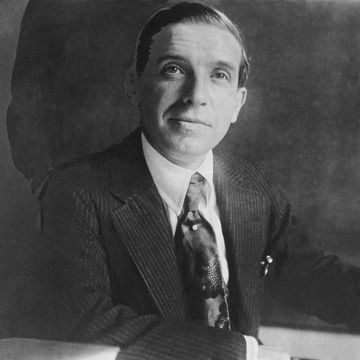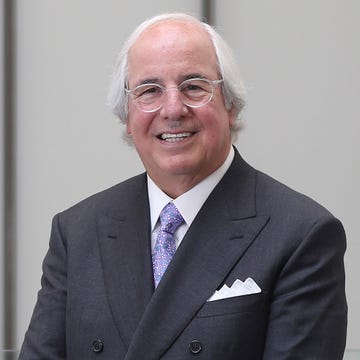In 2003, 19-year-old Stanford University student Elizabeth Holmes founded Theranos, a tech company that promised to revolutionize the healthcare industry through a device that could immediately deliver an array of diagnoses via a simple finger prick.
Of course, the revolution was all smoke and mirrors: Theranos failed to produce a viable working product, deceiving investors, regulators, and partners for years, until collapsing in a sea of lawsuits and federal charges in 2018. Holmes was found guilty on four counts of defrauding investors in January 2022 and will begin serving an 11-year prison sentence on May 30, 2023.
Investigations revealed the truth behind the sham, uncovering the utilization of dangerous health practices and misleading data, but the big question remains: How did Holmes keep the charade going for so many years?
Holmes’ mission inspired powerful backers
Certainly, the company’s stated intent was a noble one: By replacing the uncomfortable needlework normally used for blood testing with a minimally invasive process, Theranos would make this aspect of healthcare quick, painless, and inexpensive. That, in turn, would make people more likely to seek care when needed, and potentially cut down on mortality rates. Holmes often told the story of her beloved uncle dying from cancer, wrapping with an inspiring message about saving the ones we love.
With that sort of sales pitch, it’s easy to see how Holmes reeled in wealthy investors like media mogul Rupert Murdoch and board members like former Secretary of State Henry Kissinger. The all-star roster propped up the facade of legitimacy even as the walls were closing in.
She captivated investors with her charisma
After federal charges were filed, media coverage often focused on Holmes’ creepier traits—her wide eyes that never blink and her surprisingly husky voice which might or might not be fake—while overlooking the charisma that propelled her to the forefront of the relentlessly competitive tech industry. In a 2014 New Yorker profile, Kissinger spoke of Holmes’ “ethereal quality,” while former Defense Secretary William J. Perry, another distinguished board member, lauded her “big heart.”
Employees were particularly susceptible to her charms: Chief Design Architect Ana Arriola described her as “energetic” with a conviction that “really shines through,” while company whistleblower Tyler Shultz recalled, “Elizabeth had this way of locking you in, and when she was talking to you, she made you feel like you were the most important person in her world right now and you were so important to achieving this vision that you were dedicated to.”
Holmes idolized Steve Jobs and took a page from his playbook
With Steve Jobs emerging as the Silicon Valley big cheese during the formative years of Theranos, Holmes modeled her life and leadership style like the Apple CEO in a way that bordered on obsessive. Along with adopting Jobs’ signature black turtleneck uniform, she stocked her company with former Apple staffers, used the same advertising agency as Apple, and referred to her blood-testing product as “iPod of healthcare.”
In his 2018 book Bad Blood: Secrets and Lies in a Silicon Valley Startup, John Carreyrou described how Theranos employees recognized which chapter Holmes was reading in a biography of Jobs based on her management technique du jour. He also relayed the anecdote of how Holmes brought work to a standstill on the day her idol died in 2011, over efforts to find a suitable flag with which to honor him.
She fostered an atmosphere of secrecy and intimidation
Theranos infamously kept FDA regulators at arm’s length by submitting testing results from other laboratories, not its own machines. But the secrecy also extended inward. From the very beginning, employees noted the constant turnover and how divisions were sequestered from one another instead of functioning in unison. Another whistleblower, Erika Cheung, recalled the “barriers” set up in the office lab, preventing workers from seeing the devices they were ostensibly creating.
Additionally, Holmes and her boyfriend, Theranos president and COO Sunny Balwari, carefully policed the company to keep dissenters in line. One prize pickup from Apple, Jobs’ right-hand man Avie Tevanian, was pressured to resign from the board after questioning the many failed processes. And prior to quitting the company, Shultz wrote an email to Holmes that expressed his concerns, only to receive a threatening, insulting reply from Balwari.
Holmes kept her eye on the prize
Holmes continued to display a relentlessly upbeat persona over the final months of Theranos, which helped secure late-stage funding but also produced a distorted reality at the office. According to a February 2019 Vanity Fair article, Holmes would approach employees who had just testified before the SEC and engage them as if nothing was amiss. Symbolizing her optimism, she acquired a Siberian husky puppy and named him Balto, after a sled dog who once braved a hazardous trek across Alaska with an antitoxin to fight a diphtheria outbreak.
Even after the company dissolved and she was indicted on 11 counts of fraud, Holmes, who pleaded not guilty, still believed in her heroic vision: When she was approached to appear in a documentary about her rise and fall, The Inventor: Out for Blood in Silicon Valley, she told producers that she was in the process of getting more funding, and suggested they come back when things were rolling again.
Heading for prison
During her trial in the U.S. District Court for the Northern District of California, Holmes attempted to discredit testimony from whistleblowers and critics and took to the stand in her own defense. She emotionally insisted that she never misled investors and oscillated between accepting responsibility for mistakes and deflecting blame to colleagues.
On January 3, 2022, Holmes was found guilty of three counts of wire fraud and one county of conspiracy to commit wire fraud but was acquitted of other charges. Holmes raised eyebrows when she bought a one-way ticket to Mexico shortly after her conviction. Prosectors said it indicated an attempt to flee justice, something her attorneys denied.
Holmes filed a late appeal with the Ninth Circuit of Appeals seeking to remain free on bail while she continues to fight to overturn her conviction, but a judge denied that bid this week and ordered that Holmes begin her prison sentence by May 30. She has also been ordered to pay $452 million in restitution to defrauded investors.
Colin McEvoy joined the Biography.com staff in 2023, and before that had spent 16 years as a journalist, writer, and communications professional. He is the author of two true crime books: Love Me or Else and Fatal Jealousy. He is also an avid film buff, reader, and lover of great stories.














